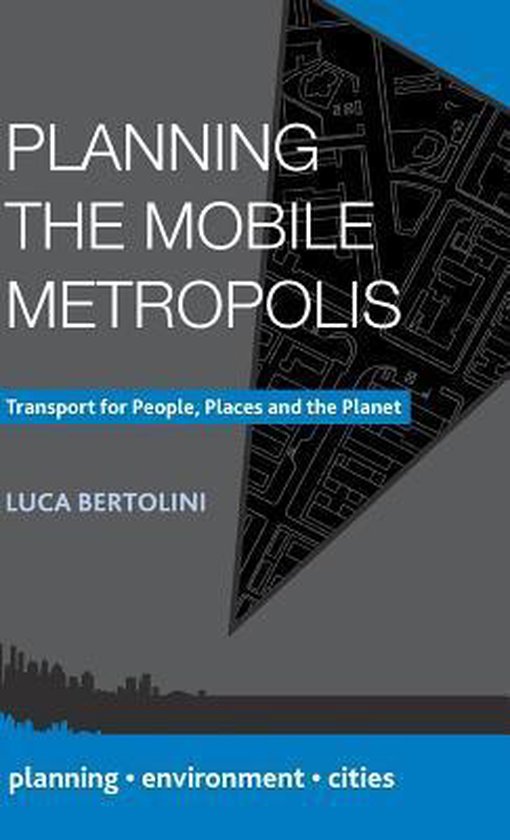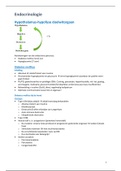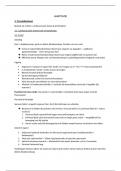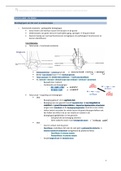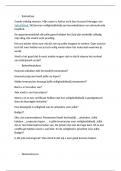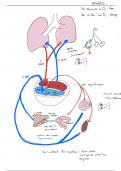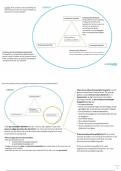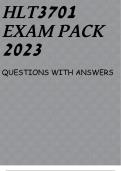Summary Moving the City Exam
21 - 04 - 2020
,Week 1: Mobility Dilemma............................................................................................................................. 3
Bertolini Chapter 1: Planning the Mobile Metropolis (pp. 1-13)..........................................................................3
Lecture 1:..............................................................................................................................................................3
Week 2: Mapping the Links............................................................................................................................ 7
Bertolini Chapter 2: Transport and Cities: Mapping the Links.............................................................................7
Wegener, M., and F. Fürst (1999) Land-Use Transport Interaction: State of the Art. Dortmund: Institut für
Raumplanung, v-xix..............................................................................................................................................8
Lecture 2:............................................................................................................................................................10
Week 3 – Urban planning as if mobility matters...........................................................................................12
Bertolini Chapter 3: Chapter 3: Urban Planning as if Mobility Mattered (pp. 48-70)........................................12
Newman, P., L. Kosonen and J. Kenworthy (2016), Theory of urban fabrics: planning the walking,
transit/public transport and automobile/motor car cities for reduced car dependency. Town Planning
Review, 87(4), 429–458......................................................................................................................................14
Lecture 3:............................................................................................................................................................14
Week 4: Transport planning as if places mattered........................................................................................16
Bertolini: Chapter 4: Transport Planning as if Places Mattered (pp. 72-98)......................................................16
Banister, D. (2008) The sustainable mobility paradigm. Transport Policy, 15(2), pp. 73-80.............................16
Lecture 4.............................................................................................................................................................17
Week 5: Integrating Urban and Transport Planning......................................................................................19
Chapter 5: Integrating Urban and Transport Planning (pp. 101-127)...............................................................19
Handy, S. (2002), Accessibility- vs. Mobility-Enhancing Strategies for Addressing Automobile Dependence in
the U.S. link: http://www.des.ucdavis.edu/faculty/handy/ECMT_report.pdf...................................................19
Lecture 5.............................................................................................................................................................20
, Week 1: Mobility Dilemma
Bertolini Chapter 1: Planning the Mobile Metropolis (pp. 1-13)
The first chapter of Bertolini’s book; Planning the mobile metropolis is wan introduction the
rest of the book. The chapter sketches how the book is organized. The most important
theoretical insight in this chapter concern the mobility dilemma:
‘We depend on mobility, but our mobility practices are unsustainable’
This poses a challenge for urban planners within the mobility planning of the city. Bertolini
describes this dilemma more elaborately in the following sentences:
‘If we chose to reduce mobility, we would deny how much our everyday life, business models
and cities have become dependent on it. If we chose to keep allowing mobility to grow, we
would deny the fact that its negative impacts cannot be sustained. The Dilemma of urban
mobility cannot thus be solved.’
This is the main argument of the first chapter of the book Planning the Mobile
Metropolis: Transport for People, Places and the Planet. This citation clearly describes the
main issue discussed. It summarizes the dilemma concerning urban transport systems, which
is described in Chapter 1. The mobility dilemma which Bertolini describes is essentially
unsolvable.
Since the first chapter introduces the structure of the book and states the first problem (the
dilemma), the chapter has a quite easily understandable argumentation structure. The author
starts with describing how current day mobile societies have developed and how they are
functioning right now. From this description derives the dilemma, which is the core argument
of this chapter.
Lecture 1:
The concept of a Living Street. Which is a street which doesn’t allow cars for a certain period
of time. It shows how the street changes one’s cars are not allowed anymore. This example is
twofold because when cars are removed for a too long period of time this can also affect the
street in negative ways. (Example: Hugo de Grootkade, Amsterdam)
Why is mobility good for you, people and cities?
Students: Accessibility, Connection, Freedom, Growth, Economy, Choice, Opportunity
Why is mobility bad for you people and cities?
Students: Pollution, congestion, environment, segregation, noise
We depend on mobility because it holds together the dispersed activities and places of
everyday life. It holds together the multi-sited production processes of contemporary
economies. It makes cities less dependent on themselves and more open and networked.
21 - 04 - 2020
,Week 1: Mobility Dilemma............................................................................................................................. 3
Bertolini Chapter 1: Planning the Mobile Metropolis (pp. 1-13)..........................................................................3
Lecture 1:..............................................................................................................................................................3
Week 2: Mapping the Links............................................................................................................................ 7
Bertolini Chapter 2: Transport and Cities: Mapping the Links.............................................................................7
Wegener, M., and F. Fürst (1999) Land-Use Transport Interaction: State of the Art. Dortmund: Institut für
Raumplanung, v-xix..............................................................................................................................................8
Lecture 2:............................................................................................................................................................10
Week 3 – Urban planning as if mobility matters...........................................................................................12
Bertolini Chapter 3: Chapter 3: Urban Planning as if Mobility Mattered (pp. 48-70)........................................12
Newman, P., L. Kosonen and J. Kenworthy (2016), Theory of urban fabrics: planning the walking,
transit/public transport and automobile/motor car cities for reduced car dependency. Town Planning
Review, 87(4), 429–458......................................................................................................................................14
Lecture 3:............................................................................................................................................................14
Week 4: Transport planning as if places mattered........................................................................................16
Bertolini: Chapter 4: Transport Planning as if Places Mattered (pp. 72-98)......................................................16
Banister, D. (2008) The sustainable mobility paradigm. Transport Policy, 15(2), pp. 73-80.............................16
Lecture 4.............................................................................................................................................................17
Week 5: Integrating Urban and Transport Planning......................................................................................19
Chapter 5: Integrating Urban and Transport Planning (pp. 101-127)...............................................................19
Handy, S. (2002), Accessibility- vs. Mobility-Enhancing Strategies for Addressing Automobile Dependence in
the U.S. link: http://www.des.ucdavis.edu/faculty/handy/ECMT_report.pdf...................................................19
Lecture 5.............................................................................................................................................................20
, Week 1: Mobility Dilemma
Bertolini Chapter 1: Planning the Mobile Metropolis (pp. 1-13)
The first chapter of Bertolini’s book; Planning the mobile metropolis is wan introduction the
rest of the book. The chapter sketches how the book is organized. The most important
theoretical insight in this chapter concern the mobility dilemma:
‘We depend on mobility, but our mobility practices are unsustainable’
This poses a challenge for urban planners within the mobility planning of the city. Bertolini
describes this dilemma more elaborately in the following sentences:
‘If we chose to reduce mobility, we would deny how much our everyday life, business models
and cities have become dependent on it. If we chose to keep allowing mobility to grow, we
would deny the fact that its negative impacts cannot be sustained. The Dilemma of urban
mobility cannot thus be solved.’
This is the main argument of the first chapter of the book Planning the Mobile
Metropolis: Transport for People, Places and the Planet. This citation clearly describes the
main issue discussed. It summarizes the dilemma concerning urban transport systems, which
is described in Chapter 1. The mobility dilemma which Bertolini describes is essentially
unsolvable.
Since the first chapter introduces the structure of the book and states the first problem (the
dilemma), the chapter has a quite easily understandable argumentation structure. The author
starts with describing how current day mobile societies have developed and how they are
functioning right now. From this description derives the dilemma, which is the core argument
of this chapter.
Lecture 1:
The concept of a Living Street. Which is a street which doesn’t allow cars for a certain period
of time. It shows how the street changes one’s cars are not allowed anymore. This example is
twofold because when cars are removed for a too long period of time this can also affect the
street in negative ways. (Example: Hugo de Grootkade, Amsterdam)
Why is mobility good for you, people and cities?
Students: Accessibility, Connection, Freedom, Growth, Economy, Choice, Opportunity
Why is mobility bad for you people and cities?
Students: Pollution, congestion, environment, segregation, noise
We depend on mobility because it holds together the dispersed activities and places of
everyday life. It holds together the multi-sited production processes of contemporary
economies. It makes cities less dependent on themselves and more open and networked.


